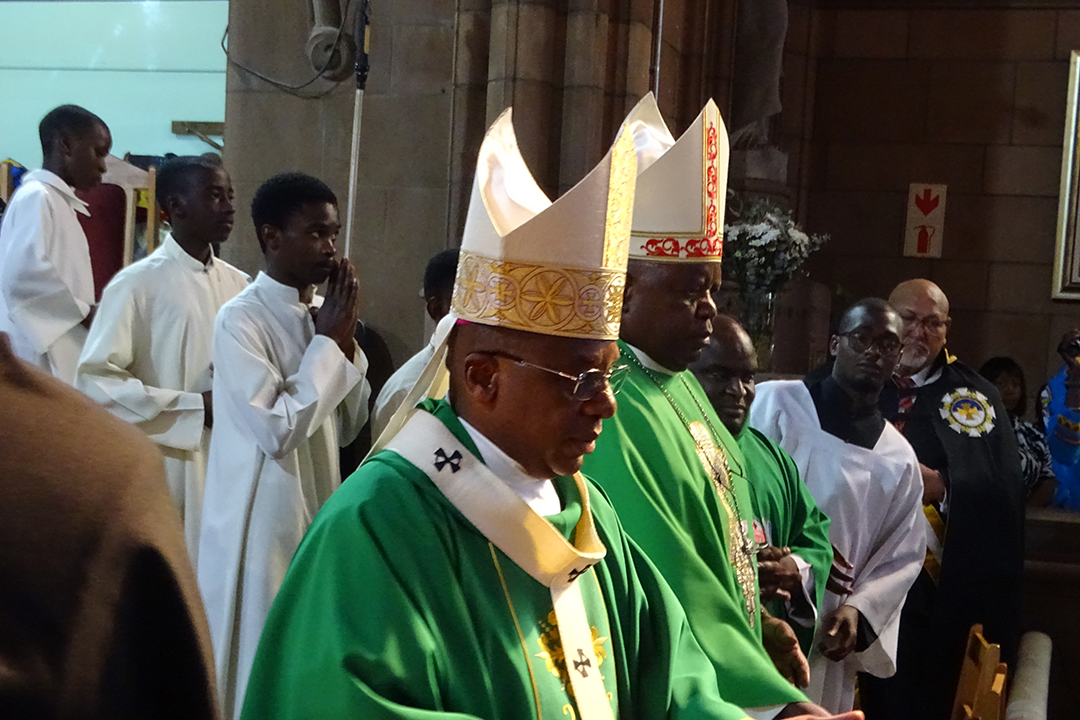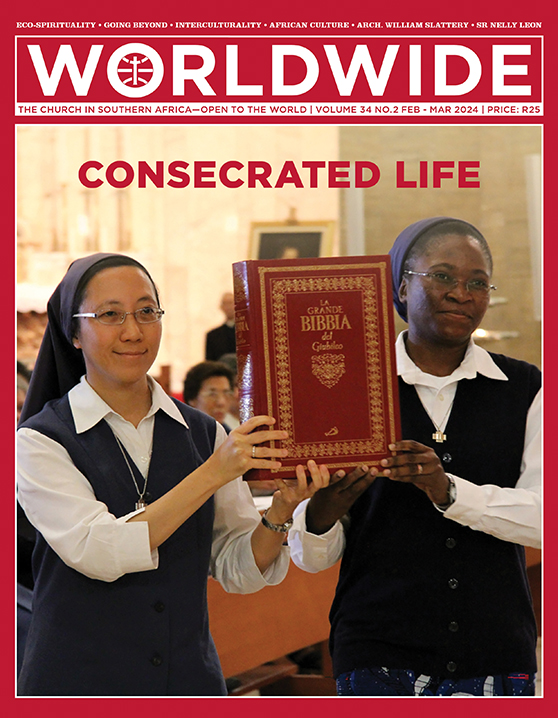
CONSECRATED LIFE
The painting on the front cover entitled “The disciples of Emmaus” reflects our journey of hope. Jesus not only walks with us, but gives us the wisdom to perform our ministries and opens our eyes to see Him in the people that we are serving.
FEATURES • ARCHBISHOP WILLIAM SLATTERY
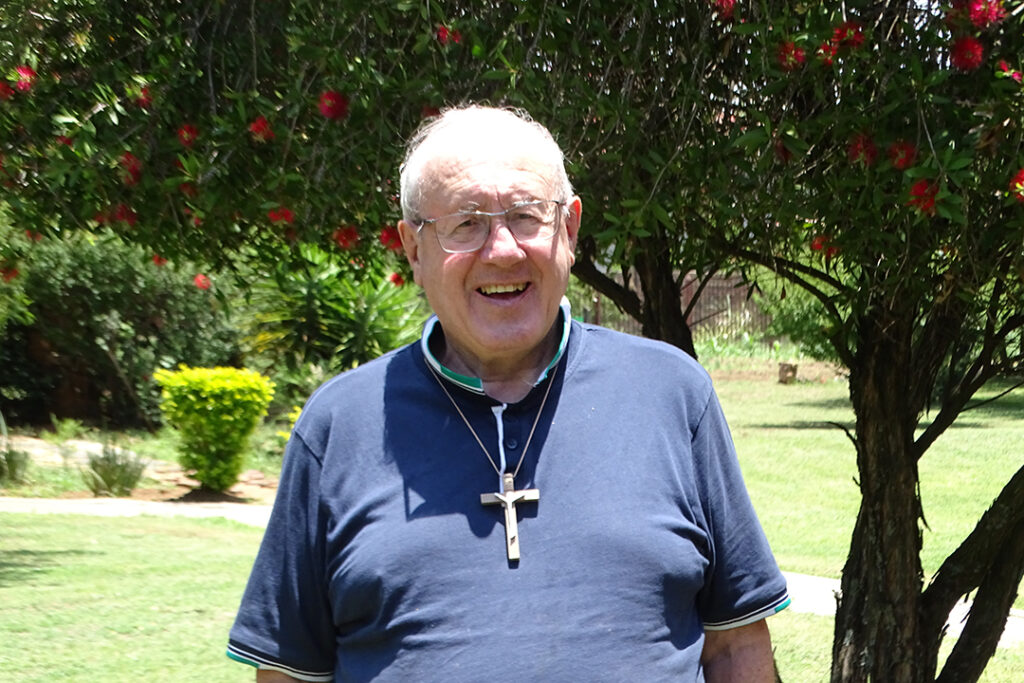
“NOW IT IS THE TIME FOR DEEPENING OF THE FAITH”
More than 60 years as a Franciscan, Irish born Archbishop emeritus of Kokstad and Pretoria, William Slattery O.F.M. converses with Worldwide on issues of Religious Life
BY FR RAFAEL ARMADA MCCJ
How relevant is Religious Life (R.L.) today? R.L. is still absolutely relevant. It has always been since the early centuries of the Church. It emanates from a prayerful encounter with Jesus. In Jn 6: 67, in the synagogue at Capernaum, when everybody walked away, Jesus asked Peter: “Do you also want to go?” Peter answered: “To whom shall we go? You have the words of eternal life.” This is a good illustration of what a vocation to R.L. is all about; the discovery that Jesus offers something special, a unique relationship to those who encounter Him. As a child, living on a farm in Ireland, and reading Mathew’s gospel—under the light of a paraffin lamp—I said to myself: “I will not meet anything more beautiful than this life of Jesus.” That thought is still with me, 70 years later. As St Paul says: “I count everything sheer loss, far outweighed by the gain of knowing Christ Jesus my Lord” (Phil 3: 8).
What can R.L. offer to the world and what are its challenges? R.L. as the Church herself, is going through a transition period, linked to the level of faith in families, homes and churches. If there is no prayer, it is very difficult for young people to discern and respond to Jesus Christ. As Pope Francis says, the whole world awaits us: men and women who have lost all hope; families in difficulties; abandoned children; young people without a future; the elderly and sick; those materially rich, but spiritually impoverished; men and women looking for a purpose in life, thirsty for the divine. There are huge needs.
Technology, education, urbanization and the mobility of people have opened new horizons to millions, but there is also tremendous loneliness. Our world is focused on the individual, rather than the community; which was embodied in the past through race, religion, nationality, churches and parishes. Today, the emphasis is on celebrity, power and success. We have a great amount of communication, but we are very isolated. This makes the response to R.L. more difficult as discernment takes place in a person-to-person context. If the individual is isolated, the chances of interaction are limited.
St. Anthony, St Pachomius and others started R.L. in Africa. Then it waned and came back, brought by missionaries. Now R.L. has flourished in many countries…. As Pope Francis says, “What would the Church be without the presence of so many saints and Religious men and women throughout her history? The Church would be very impoverished”. What would the Church in South Africa be if Religious did not come? The majority of the country depended very much on Religious: priests, brothers and sisters. Sisters have served a huge role in the foundation of the Catholic Church as witnesses to the gospel. All the rural clinics in South Africa were started by religious sisters and most of the large schools and hospitals, especially in remote areas, were started by the Catholic Church. Missionaries and religious congregations transformed rural areas and their environment by building parishes, halls, schools, clinics, and centres where people could come together. They taught skills of every kind.
Missionaries and religious congregations transformed rural areas and their environment by building parishes, halls, schools, clinics, and centres where people could come together.
Does R.L. connect with the African soul? Africa is the most spiritual continent; the second lung of the Catholic Church. Africa gives great importance to the person, child and family. She has a very clear outline of moral values in line with the ten commandments: not killing; respecting parents; each other’s wives/ husbands; and worshiping God. Africa prepared the way to R.L. which was like a hidden treasure in the field. Missionaries are meant to be treasure seekers. Often, they failed, thinking they knew all the answers, but these were hidden in the African people, in their sense of belonging, and in their spirit of ubuntu. R.L. is a call to a communal and fraternal life, a life of acceptance and working together. This is a big challenge in all religious orders.
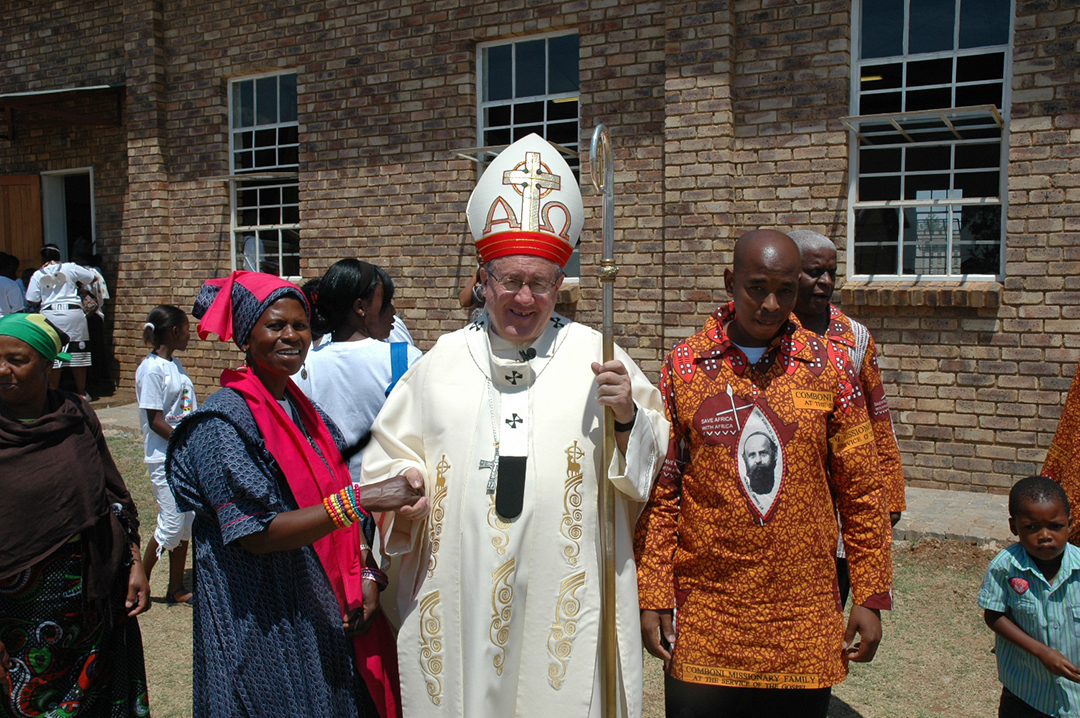
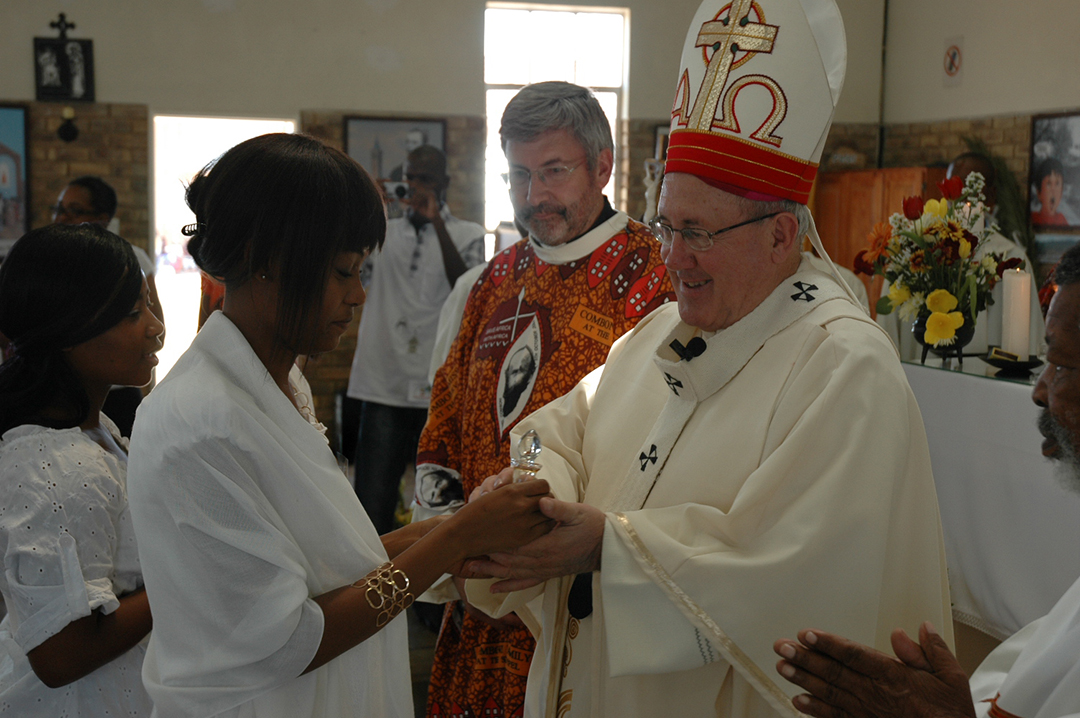
Some parts of the world have so many vocations while others are dry… Certainly, there are huge differences. In South Africa, we are going through a little desert, particularly in female religious orders. Things that hinder vocations are ignorance —we have failed miserably in our catechetical programs— and emphasis on the individual who thinks it is all about himself/herself and the world. Those who entered the seminary before me would question: Will I fit in this widely respected way of life? Those who came after me would ask instead: Will this congregation suit me, allow me to realise my ambitions? There was a concern for the needs of the self, especially in South Africa.
Many families are also broken; only four out of ten children reside in the same home as their father. 62% of the birth certificates issued in SA in 2018, have no father’s name. This affects the children who lack the ease to live with authority, and experience a crisis of identity and self-reassurance in their adolescence.
Saints with steady fatherly figures, such as Teresa of Avila or of Lisieux, and Catherine of Siena, became powerful women. Men’s contribution to the rearing of children is important and complements the affectionate love of mothers. Large parts of SA are also secularized, with no reference to God. Less than 1% of catholic children go to a catholic school, and only 21% of those attending catholic schools are Catholics. Young people are not growing up in an atmosphere of faith; but where faith is present, faith becomes very attractive to them.
Religious orders have left schools and clinics in SA. How has this affected their identity or their work? In Kokstad Diocese, we have three magnificent hospitals built by the Church, serving almost a million people. When Transkei became independent, the new Commissioner took over these hospitals, and the sisters gradually left. This weakened our witness. Faith is picked up from one’s surroundings. For instance, when a young lady saw the love and care for people of sisters doing rural clinic work, saving mothers and children at birth, this had a huge impact on her faith.
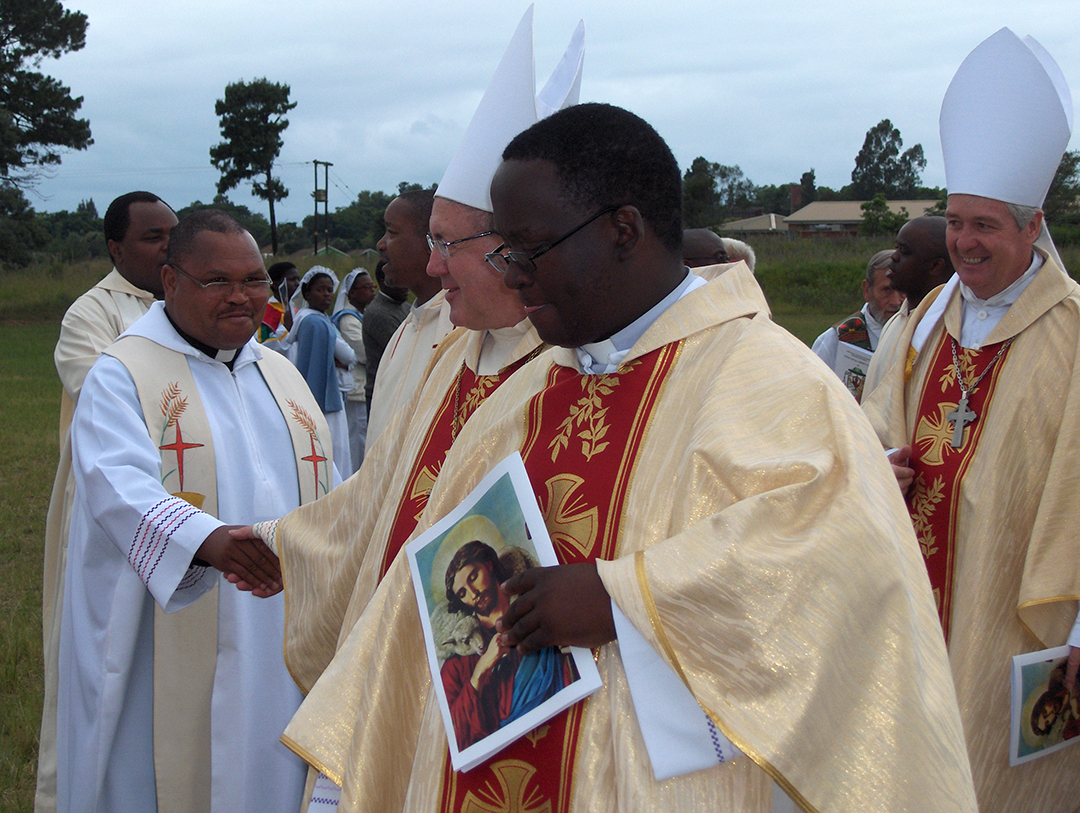
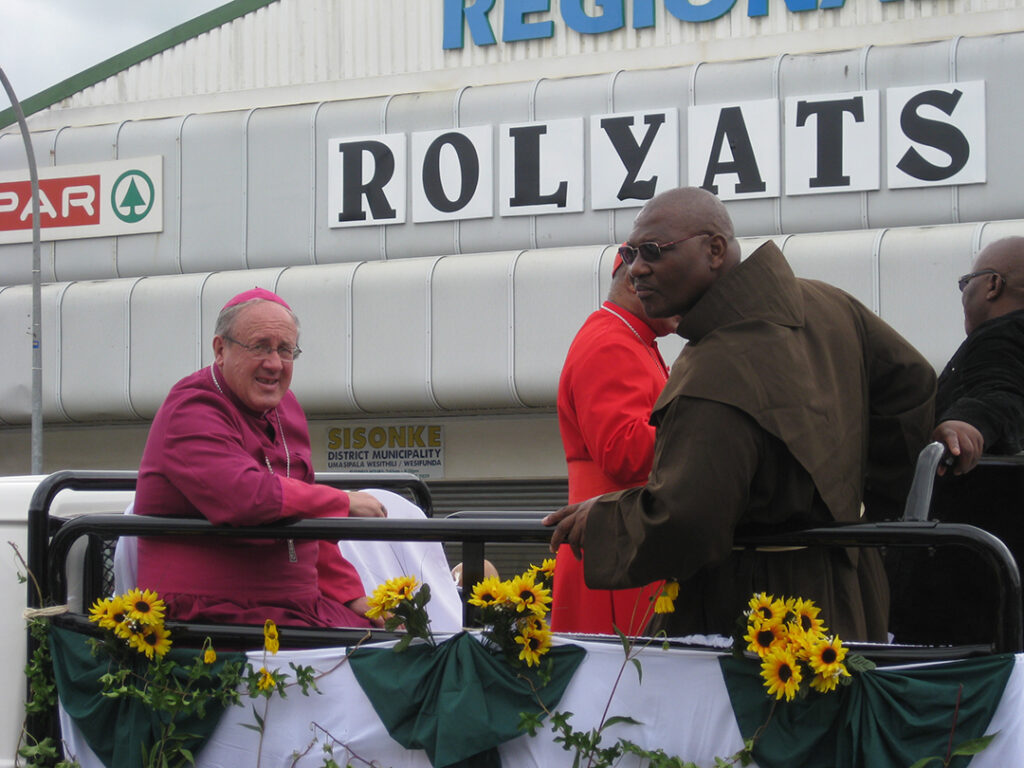
Is a new model of Church dawning? I trust so. Many sisters and lay people suffer from the effects of clericalism. “We would like to do things, but Father does not let us,” they say. This has to disappear. Pope Francis is bringing home the Church of Acts 2—a Christian community of disciples gathered around, praying together, breaking the bread, looking after the poor, listening to the teaching of the Apostles.
Things that hinder vocations are ignorance and emphasis on the individual who thinks it is all about himself/ herself and the world.
Certainly, we have a huge challenge, but this can also be a Kairos moment. We have to reflect upon the current structure of the Church which has to die somewhat in order to grow something new. The hierarchical structure will always remain, but the divine given structure can be seen as the bones of the Church. There is also the whole charismatic side which includes R.L., from Mother Mary to the latest novice. The Holy Spirit is working in the laity, in the Religious, etc. Until Religious in parishes countrywide become involved in the engine which drives the preaching of faith, vocations will continue to decrease. Young people must see that those like themselves matter in the growing of the Church.
The Church has to open her doors and say to women religious and the laity: Come in! You are the Church; let us listen and discern together, in synodality, because no one has the full answer. This is a knock on the head to clericalism, where Father controls everything and imprisons the Holy Spirit. A certain parish produced 97 sisters, but only one is working in that diocese! We are fighting the battle of the Lord with one hand behind our back. The fruits of this new awareness of the presence of the Spirit in the synod, in the community, in the parish, in R.L., bring joy and attract vocations.
Religious, such as Albert Nolan, Sr Ncube… played a relevant role in the history of SA. Is this prophetic dimension currently weakened? When the Church and Religious were facing Apartheid, it was clear what the evil was. The Church played a powerful role which perhaps has not been truly recognised. All over the country you find graveyards filled with priests, sisters and brothers who left their countries, serving in this land, never to return home. That sacrifice has not been adequately acknowledged.
Arriving in SA, 52 years ago, I said to myself: “We, in Ireland, were colonialised for hundreds of years, suffered terribly, and nobody came to help us. I must give to these people a sense of their dignity, and they must liberate themselves.” I thought that I could do so by honouring them, respecting their insights, helping them in their training, hearing their voices, encouraging their culture, until they believed in themselves.
What is the place for Religious in South Africa? Many of us, members of religious congregations, when we came to this country, acted as parish priests, that was what the Church needed at that time. As administrator at Marian Hill Diocese a few years back, I realised that each parish had a local priest and they had 25 seminarians. They did not need Religious as parish priests.
Now it is the time for deepening of the faith. The biggest presence of Satan in our country is ignorance of faith. There are prisons, hospitals, catechesis, youth who explicitly say that they are totally neglected. Does the Church have the vision to bring in Religious and get them involved in these areas?
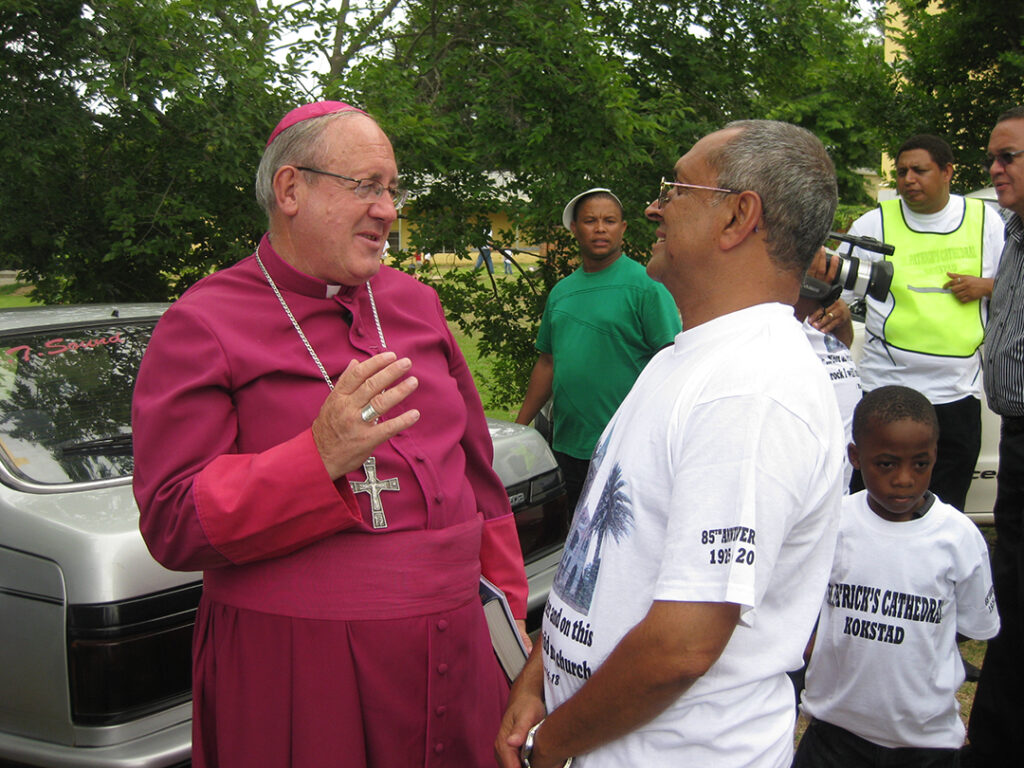
Many works in the Church should be called ministries and be officially recognised as such: spiritual directors, hospital and prison visitors… Religious superiors need to ask themselves: What precisely should our own emphasis be on? Many religious congregations, from the beginning, are not trained with a focus or direction.
What is your view of local religious congregations vs international ones? International congregations have the strength that they can learn from their international cooperation and experiences; local congregations have the advantage that they are born of local people sharing their culture, language, understanding, needs, desires and weaknesses. Their challenge is to be big enough to offer the necessary formation in the evermore demanding work of education. In all our congregations there are people who have a tertiary education. Local congregations must be looked after by their dioceses, prepared for today’s challenges and supported by them. They must also look after Brothers, whose advantage is that their whole lives are devoted to their congregation. Their schools have tremendous impact.
Is there a place for overseas Religious in Africa? Definitely; as there is a place for Africans working, for instance, in Europe. R. L. brings a different flavour or radiance to dioceses.
In August 1993, when I was nominated bishop of Kokstad, I initially refused. Being a young white bishop in a diocese with a 90% African population, made no sense to me. On coming to Africa, I had said: “I will learn the language of the poor”. I learnt about their culture, stayed with them, and walked to outstations. However, my letter of appointment came three months later. At my ordination, I was very uncomfortable, but the people had no problem whatsoever. I consistently received a royal welcome at every parish and outstation I went to. The people were unbelievably supportive. What they looked for, was service.
How far have we reached in the inculturation of R.L.? Inculturation must start with God, not the culture. The question is: How do we best respond to God’s love for us in every culture? This involves prayer, faith, a sense of God and how good God is. Once we have done that, to inculturate means: How do I, as a Zulu or Sotho or Shangaan, please this God who is love? African cultures have an answer: The person is a person through other persons, which is the foundation of African humanism; it means love for the people.
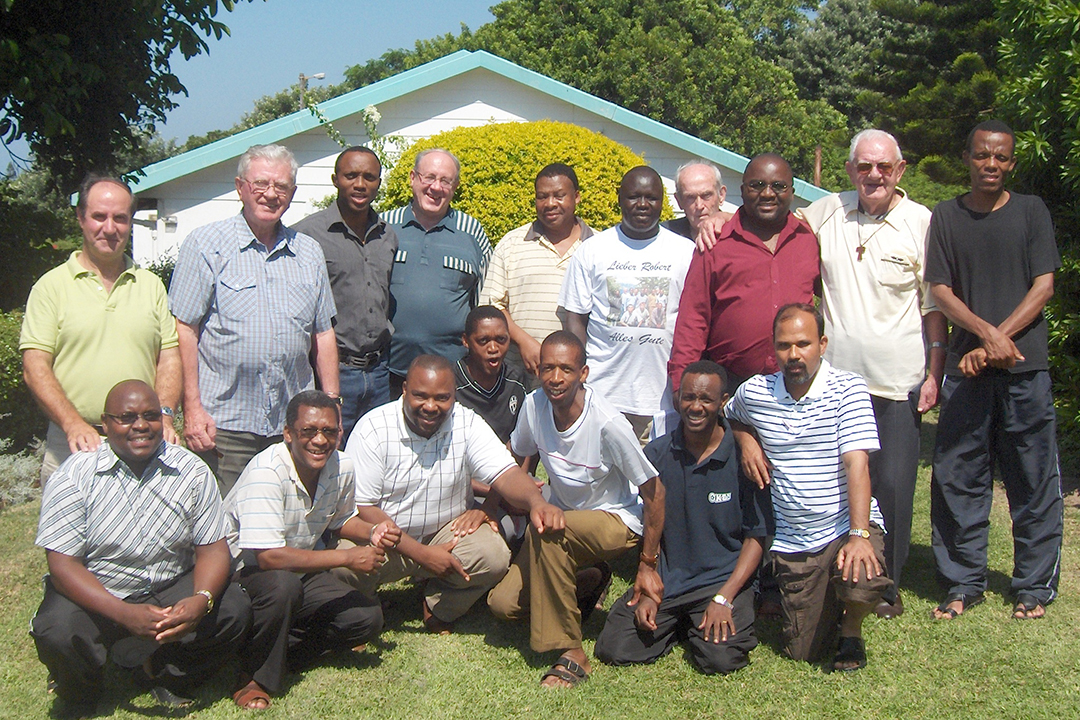
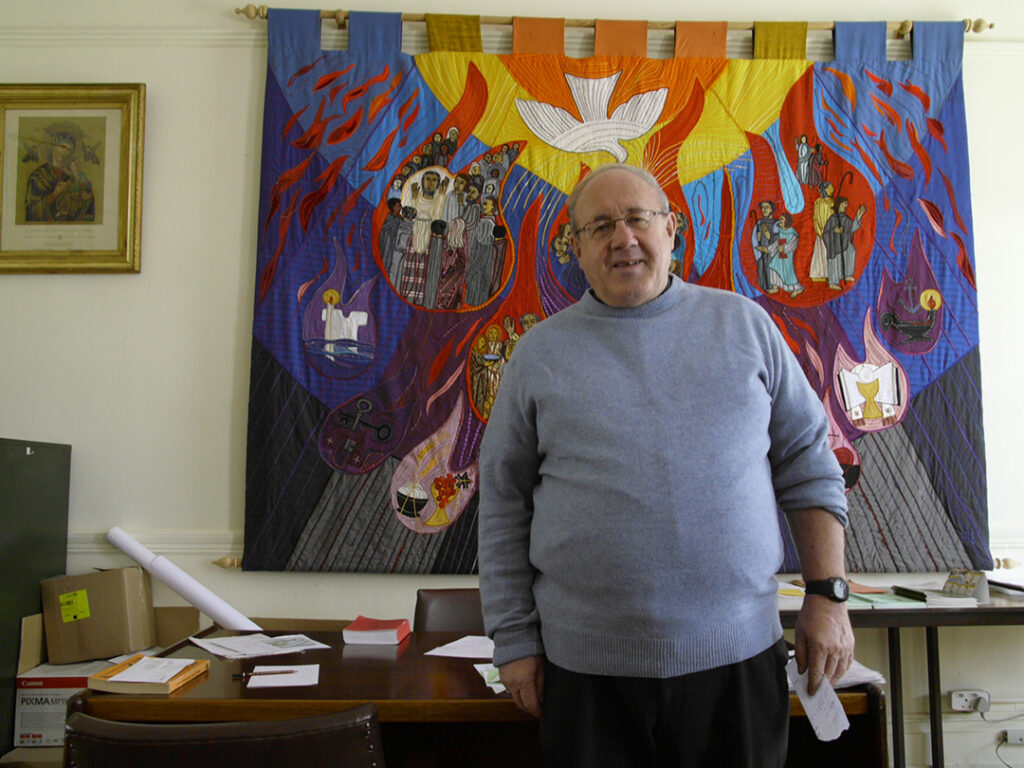
How are we facing internationality and interculturality in our communities? This is a big challenge, but also a grace, because this coming together cannot sprout spontaneously.
After Vatican II, many Franciscans asked to live in smaller structures, in poor areas, but 80% of them left the Order. Being friends was not enough to guarantee perseverance; faith was needed. Others who did not particularly like each other were sent to stay together, and they persevered. They worked it out and called on their faith, they prayed together and shared life.
Inculturation must start with God, not the culture. The question is: How do we best respond to God’s love for us in every culture?
The Jubilee of the Consecrated Life has the topic, ‘Reconciliation’. How far have we reached in this journey in SA? SA has not made enough progress of bringing people together. The Church must also take part of the blame for that. We are still apart from each other; however, we must be realistic as well. We have implemented something: mixed congregations or Pastoral Councils in most of the churches, but changes take time. In 1922, Ireland became independent from England. One hundred years later, you may find flags of different countries outside hotels, libraries, etc, but not a single English flag.
R.L. must maintain reconciliation as an ideal and work towards it. We must not be too hard on ourselves; with God’s help we will succeed. There are also cultural differences, not only racial differences. For example, in Diocesan events, a diverse understanding of the length of celebrations is a challenge when we come together.
What about relationships between the bishop and the religious? I had a very positive experience. I’ve always been saying that bishops have to work precisely on what their ministry is, spiritual supervision. I tried to have good relationships with priests and religious and to bring them together. In Kokstad, every first Monday of the month, we came together for a meal or we spent a few days a year together.
As Bishop, one must get close to the people one is working with as much as possible, then things can be talked through. Religious superiors are in a more difficult situation; they must look in both directions, towards the requests of the bishop and towards their members. The bishop focuses more on his own pastoral demands. However, the bishop also needs to take into consideration the challenges of a Provincial if he asks him/her to move a member. Ensuring harmonious relationships is the key issue in these situations.

